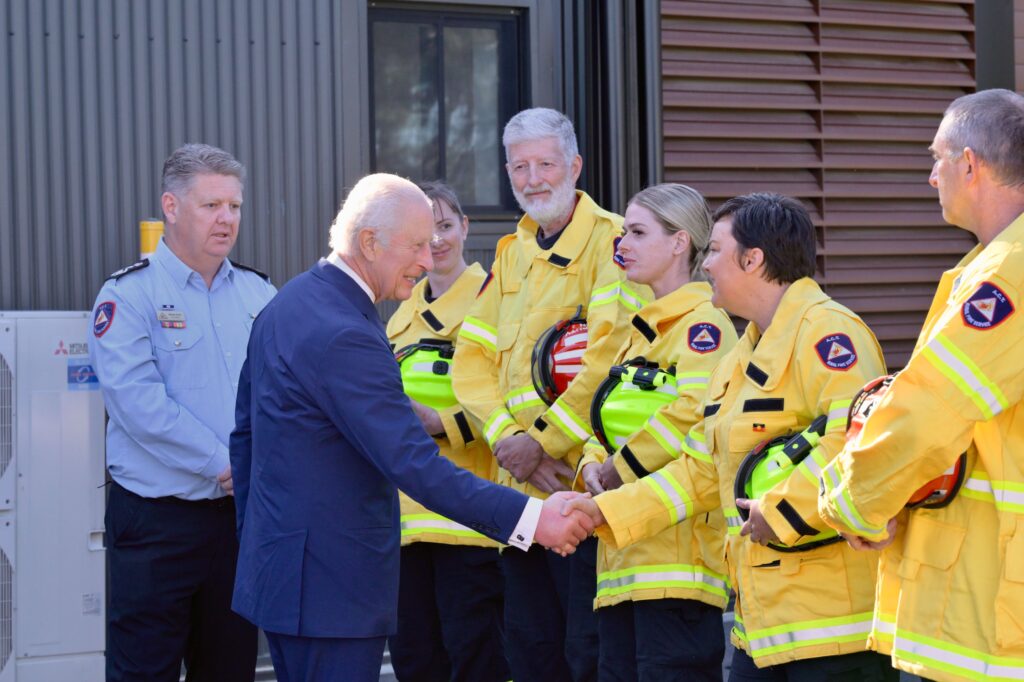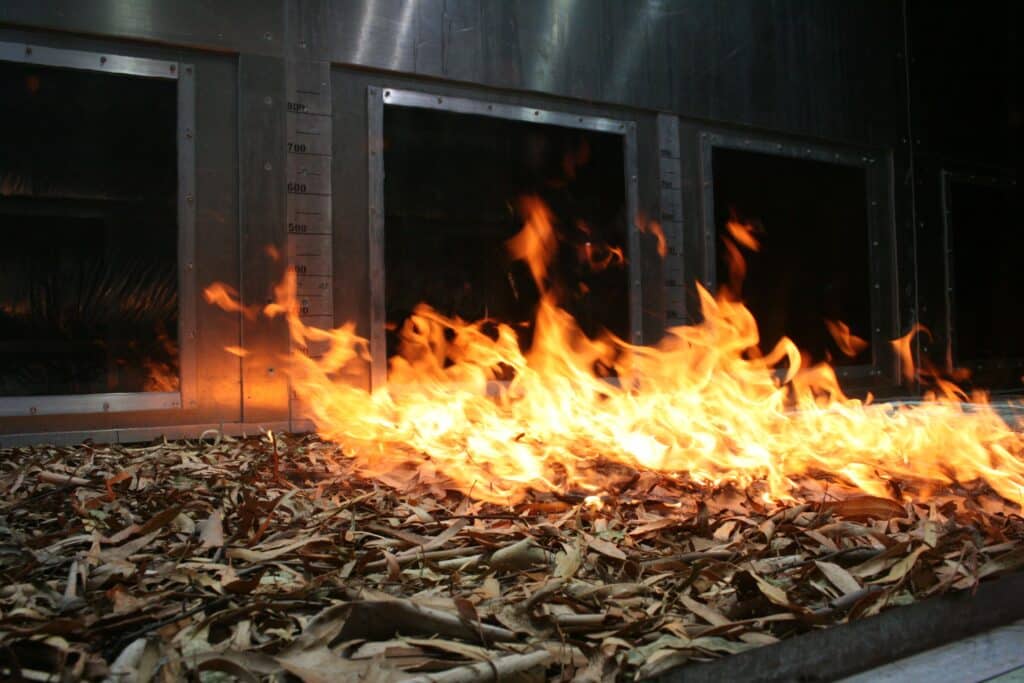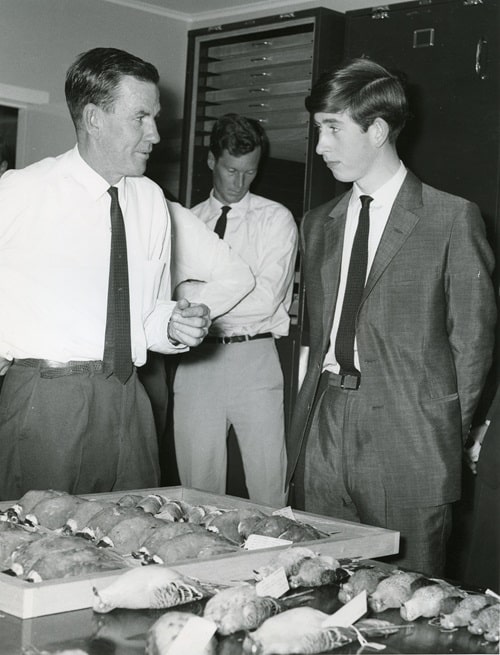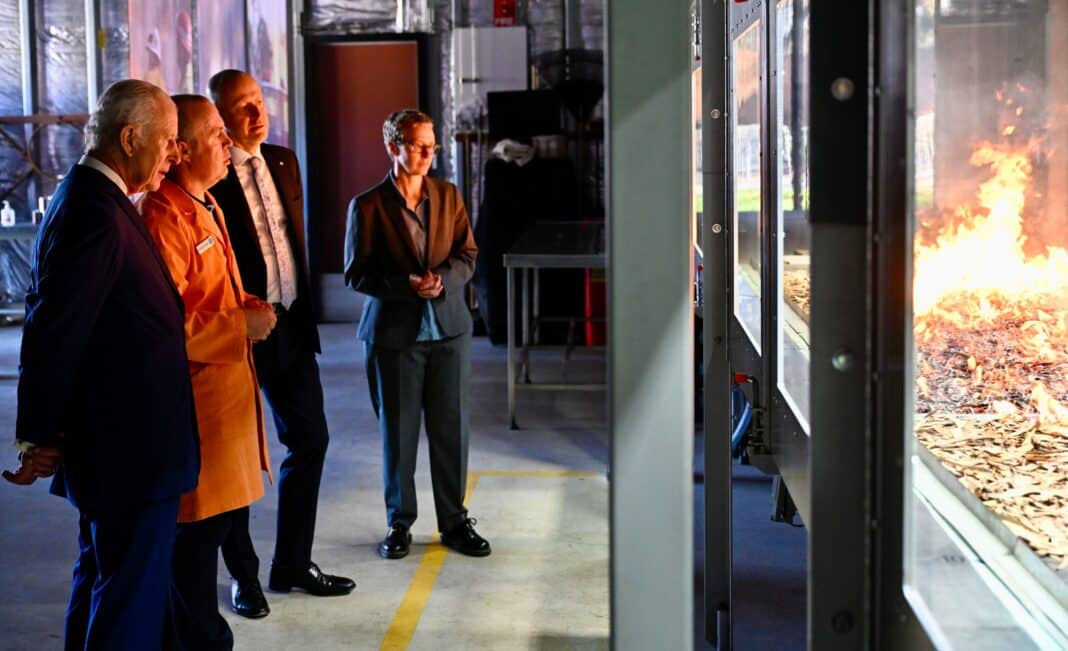Like his mother, the late Queen Elizabeth, King Charles has been a firm supporter of the environment for decades. He is patron of several forestry-related organisations, such as the Royal Forestry Society, and often speaks of the need to protect the world’s woodlands.
So, a visit to CSIRO’s National Bushfire Behaviour Research Laboratory in Canberra during the royal tour ‘fuelled by his passion for forests, the environment and interest in climate change impacts.
As the increasing impact of wildfires is felt around the globe, the King gained insight into how Australian scientists work collaboratively to understand and predict bushfire behaviour and help protect communities and fire crews during outbreaks.
The visit to Australia’s national science agency was part of the King’s sustainability-themed visit to Australia and his second visit to a CSIRO Canberra site. In February 1966, a young Prince Charles visited the CSIRO Division of Wildlife Research Division at Gungahlin, 10 km south of the ACT.

CSIRO chief executive Doug Hilton said he was proud to show how bushfire research was not just helping Australians solve a significant national challenge but aiding an international community who are sharing learnings and building resilience to these extreme events.
“The rising threat of extraordinary landscape fires has shown that uncontrollable and devastating wildfires are becoming an expected part of our seasonal calendars … not just in Australia, but across the globe,” Dr Hilton said.
Under climate change, countries are likely to see a greater frequency of conditions conducive to the outbreak of wildfires, even in places that haven’t historically experienced the impacts of these unplanned large fire events.
This has been exemplified by events such as the Wennington wildfire in east London on July 19, 2022, during a heatwave in the UK, that destroyed 20 houses.
During his visit to the CSIRO bushfire lab, the King witnessed two bushfire demonstrations. The first involved him igniting an experimental fire in the ‘Pyrotron’ – a 29-metre-long combustion wind tunnel that enables the study of fires in a safe and controlled environment.
The King then met with CSIRO researchers, ACT Rural Fire Service chief Rohan Scott, and members of the Tidbinbilla volunteer brigade, to witness a ‘burnover‘ drill using an ACT Rural Fire Service heavy tanker.
CSIRO senior research scientist Dr Matt Plucinski, who conducted the Pyrotron demonstration, said the apparatus was used to better understand bushfire behaviour and the factors influencing bushfires, such as wind and fuel types. It is also used to improve understanding of suppression effectiveness and bushfire emissions.
“Understanding changing weather patterns due to climate change and the likelihood and behaviour of bushfire outbreaks helps to increase resilience in Australia and overseas, especially in regions that previously haven’t been that prone to bushfires,” Dr Plucinski said. “This research and the predictive models of bushfire spread we develop are used by fire agencies for planning suppression strategies and warning communities in the likely path of the fire.”

CSIRO’s research into understanding bushfire behaviour and the weather that impacts the fires – as demonstrated by the Pyrotron – in turn helps scientists and fire agencies work out what protection firefighters may need in the field.
CSIRO helped develop the world-leading ‘burnover’ protection systems for crew-cabins in fire trucks with fire agencies including the Victorian Country Fire Authority and the NSW Rural Fire Service.
In the ’burnover’ drill, the King was shown how these systems feature spray nozzles over the cabin, heat shields for windows and fire-resistant covers for electrical components, pumps and air hoses.
The effectiveness of these crew protection systems was first put to the test in a major way during the 2009 Black Saturday fires in Victoria.
Eight fire trucks were impacted by fire and all their crews emerged safely with no loss of life.
These protection systems continued to provide crews with increased safety in subsequent fires including the more recent Black Summer 2019-20 bushfires.
CSIRO bushfire adaptation research leader Justin Leonard said the ‘burnover’ protection system had now been rolled out in nearly every state and territory in and his team is now sharing their knowledge with fire agencies in France and America. The CSIRO team is sharing the research, both in terms of the designs for trucks and the way we validate and test the systems through the use of a purpose-built bushfire ‘burnover’ simulator situated in Mogo, a small heritage town in the NSW South Coast region.
“The opportunity to present this collaborative work to the King helps us amplify the important message of how we tackle bushfire in Australia and the impact of what we do,” Mr Leonard said.
“Protecting lives and the environment as we deal with more severe and frequent bushfires is an important process for us to get right under climate change.”

While the King’s visit marked the first visit to Australia by a reigning monarch since 2011, it’s not the first-time royalty has become part of CSIRO’s history.
The insect repellent Aerogard rose to prominence during the Queen Elizabeth’s visit to Australia in 1963.
The CSIRO-invented epellent was employed to protect her from the national pest, the Australian bush fly, during a round of golf. Journalists following the Queen noted the absence of flies around the official party, and word about CSIRO’s new fly-repellent spread. Aerogard went on to become an Australian icon.






